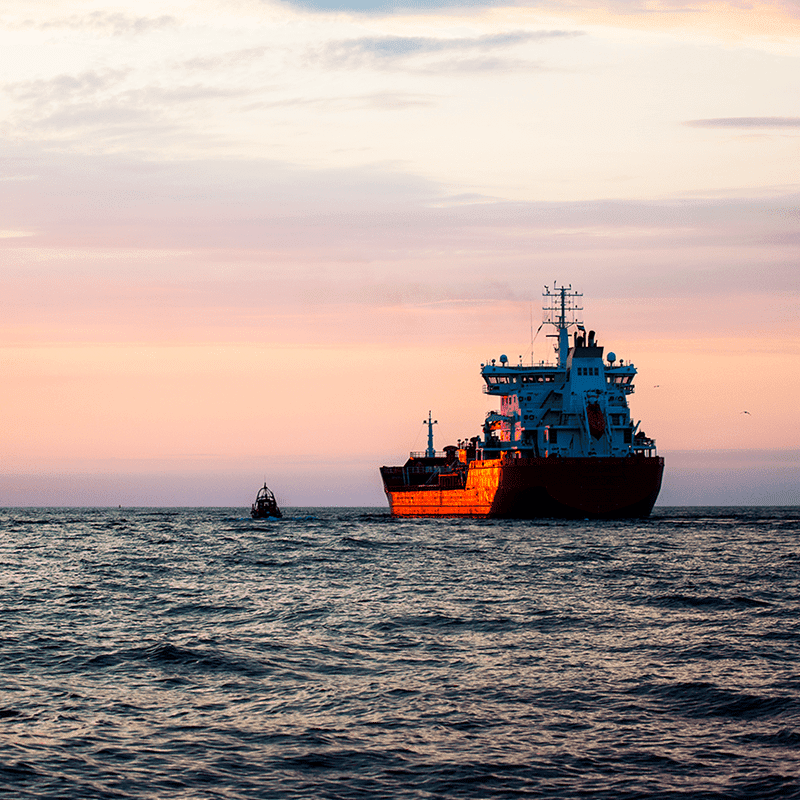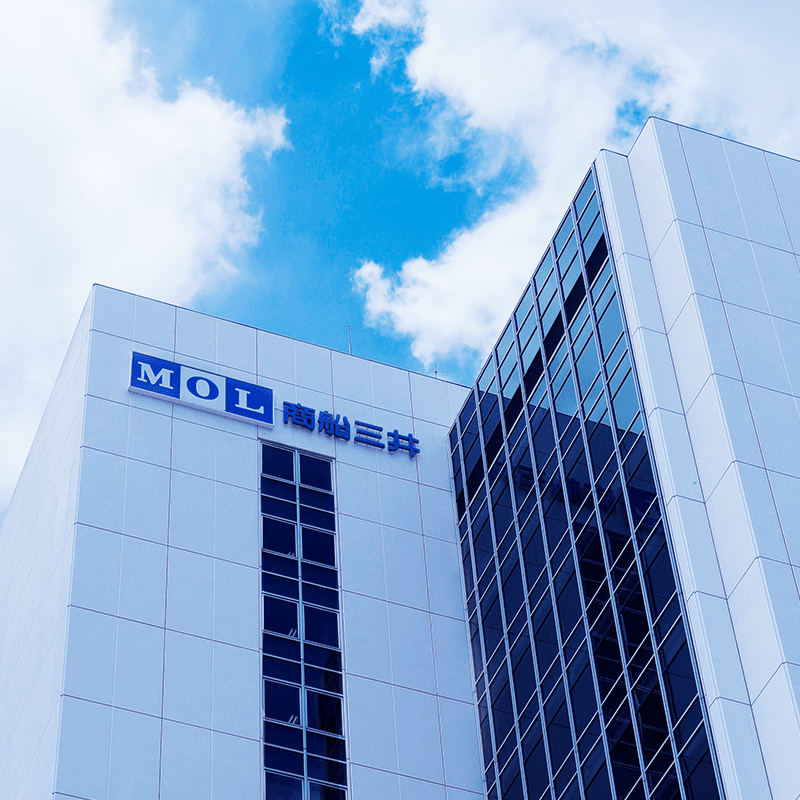BLOG
Cryo-Powered Regas System for FSRU (2)~ Cryo-Power Regas Development History~
- Energy
2022.02.08
As MOL introduced the previous blog, MOL has developed “Cryo-Power Regas” system which enables MOL to reduce by 55% of CO₂ emissions in regasification process.
Via this blog MOL would introduce Cryo-Power Regas from the point of view of “how”!!
Please check our introduction video for Cryo-Power Regas from below also!!
How Cryo-Powered Regas System Development Started
It was 2017 for MOL to start to think of applying Cold Energy utilization idea to FSRU regasification system in order to differentiate FSRU business from other competitors. In 2017, MOL FSRU Challenger which was MOL’s first FSRU as operator was delivered which equipped with most advanced heating regasification system by utilizing sea water directly at that time. After that next-generation technology, “glycol water indirect heating regasification system” which utilizes glycol water as intermediate heating medium was introduced to the market later and it became mainstream. While technology for regasification innovated, MOL also was seeking for more efficient and more environment-friendly technology.
MOL focused on “cold energy” which exists in LNG in large amount and which has been discarded into the ocean. Since around 2015, introduction of “binary cycle power generation system” which is utilizing waste heat from scavenging air has become popular as one of technology for reduction of CO2 emission. In reflection of that, if cold energy can be reused also, reduction of CO2 can be expected, and the project for utilizing “cold energy” kicked into gear.
Two years later (2019), MOL could finally find partners to team up for developing new regasification system technology. As marine technology leader, DSME (Daewoo Shipbuilding & Marine Engineering Co., Ltd.) agreed to co-develop new regasification technology and MHI-MME (Mitsubishi Heavy Industries Marine Machinery & Equipment Co., Ltd.) agreed to be a major turbine generator supplier which has shown good track records on steam turbine generators.
The new technology is named as “Cryo-Powered Regasification” and FSRU equipped with this new technology is named as “CPR FSRU”.
How Cryo-Powered Regas System Symbol Made
After team-up, MOL & DSME started to create representing symbol for CPR system in order to give catching up impression to customers at a glance which energy source this new technology is utilizing and how this new technology is beneficial.
The light bulb represents “Electrical Power Generation”, and snowflake represents “Cold Energy”. That is, this symbol implies electrical power generation from cold energy.

How Cryo-Powered Regas System Development Progressed
Once Symbol for CPR settled down, MOL & DSME started to move on next steps to materialize this new technology and to introduce into market aiming for not only contributing environment but also giving credits to customers coming from “Fuel Saving” benefit.
As the first step, MOL and DSME tried to determine the basic design of ORC (Organic Rankine Cycle) to obtain electrical power generation from cold energy as much as possible. For example, both parties investigated and studied the various refrigerant for ORC that has no flammability & explosibility but gives high-performance of electricity generation. Various studies conducted for major equipment configuration and major equipment specific type to suit FSRU application.
It took a lot of trial and error to find out best solution and finally MOL & DSME obtained BV’s (Bureau Veritas) AIP (Approval in Principle) that prove the system is verified in terms of Class Rules and Regulations.

As second step, detail engineering commenced targeting to carry out successful HAZID (Hazard Identification Study), HAZOP (Hazard and Operability Study) and RAM (Reliability, Availability & Maintainability Study) which are fundamental risk studies and availability evaluation of the system conducted by BV to secure and strengthen the safety of the system objective. Via regular meeting between MOL and DSME, detail engineering could proceed successfully by incorporating MOL’s own flexible & safe design standards to cope with customer’s various needs. Major equipment installation plan and P&ID (Piping & Instrumentation Diagram) * completed finally a few months later.
Moreover, for the sake of maximizing FSRU asset value, tradability as LNG carrier was also considered. So far FSRU has applied main engine as DFDE to produce required electricity for regasification however its performance was not so efficient that consumes more fuel. due to large size of it. By applying CPR, MOL & DSME succeeded to save fuel and optimize DFDE’s size & configuration. That made it possible for 2 stroke main engine to be suitable for CPR FSRU which is superior to DFDE in fuel efficiency. As a result of that, MOL & DSME can provide CPR FSRU that can enjoy fuel saving benefits not only at FSRU mode but also at LNG carrier mode.
(*) P&ID: Abbreviation for Piping & Instrumentation Diagram. This is piping instrumentation diagram expressed in specialized symbols to indicate piping and connections of instruments of the plant.
As third step HAZID, HAZOP and RAM carried out. Due to COVID-19 pandemic, face to face workshop could not been held, however, every participant from each party proactively participated workshop several days remotely to make the system perfect and to figure out stability which is at least equal to the performance of conventional regasification system such as direct sea water heating type and indirect glycol water heating type. Afterall, MOL & DSME successfully completed those workshops showing industrial acceptable criteria. In parallel, short version movie and presentation document prepared for the interim promotion to customers and various customer showed their interests on this CPR FSRU.
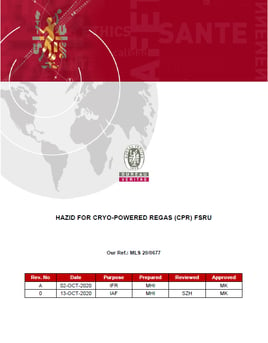
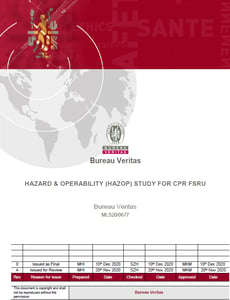
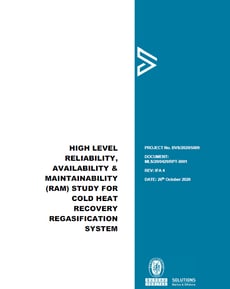
In order to provide this CPR FSRU solution to customers with high assurance, there was remaining final stage that CPR system is ready in both is ready in both theoretical aspect and real scale project via actual pilot plant demonstration. That is demonstration by utilizing pilot plant. Though this system verification plan via pilot plant established from the beginning of the technology development, it took around 1 year to build real pilot plant at DSME’s R&D center under COVID-19 pandemic.
Due to the spread of COVID-19, equipment & accessories for the pilot plant could not be delivered on schedule at the DSME’s site and also many related engineers from overseas could not attend. Only Korean domestic service engineers and MHI-MME engineer could attend final commissioning of the pilot plant. When it comes to trouble shooting at the site, all parties communicated remotely those who could not attend physically at site.
Through the commissioning and various tests, MOL & DSME could find the way to operate refrigerant system at stable condition as result of trial and error. By overcoming any kind of obstacles, MOL & DSME jointly demonstrated and verified its system functionality and performance successfully.
Additionally, final comprehensive version of CPR promotion movie completed right after pilot plant demonstration. Please check it from below.
【Photo during demonstration】






What MOL & DSME could verify with confidence via small scale pilot plant demonstration, theoretical expecting/calculated values match to the test results so that actual real scale CPR system will follow at least same trend, and moreover it could show better performance due to higher efficiency and design margin factors.
MOL’s Goal and Role in the World
MOL is the first Asian FSRU player in Asian area by being awarded projects noting that there is very high barrier to overcome to enter FSRU business market. Beyond traditional LNG carrier business, MOL expanded its business area to downstream such as FSRU area and MOL has run continuously with diligence to make MOL’s position as one of major FSRU provider. Now, MOL is fully ready to shake FSRU regasification system technology trend and lead the market trend by giving great benefits to customers (up to 55% fuel saving, 55% CO2 reduction, 70% NOx reduction).
In addition, as announced earlier via separate news, MOL’s one of mid to long term target is reducing GHG emission intensity by approx. 45% by 2035. By means of CPR FSRU solution, MOL achieved early goal of this target in FSRU business area planned in 2019. MOL strongly believes that CPR FSRU will contribute a lot on global environmental issue in a positive way!


Recommended Articles
2022.07.05
- General Shipping
2021.04.13
- Energy
2023.12.19
- General Shipping
2021.08.07
- Eco Friendly
2025.03.18
- General Shipping
Latest Articles
2025.12.09
- Eco Friendly
- General Shipping
2025.12.03
- General Shipping
2025.11.20
- Energy
- General Shipping

